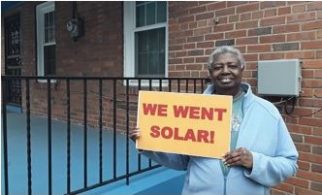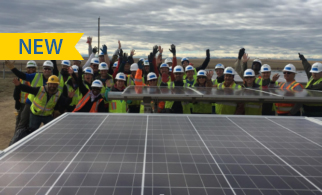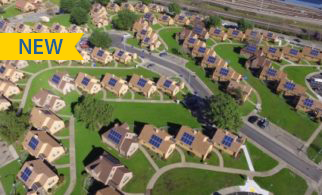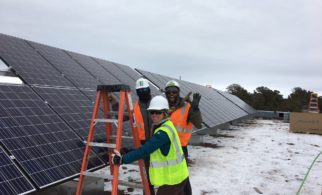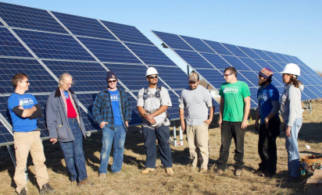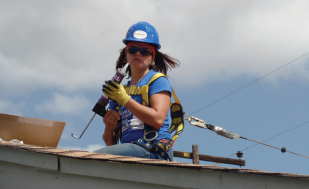Multifamily Housing
Overview
A low-income multifamily solar program is a great way to help affordable housing providers, building owners, or large apartment complexes install solar for the direct or indirect benefit of the tenants. Utility bills are usually the largest and most volatile portion of an affordable housing development’s budget. Stabilizing utility bills through solar and other measures makes it easier to maintain operating budgets, retain tenant services and avoid raising rents. For example, check out these case studies that IREC, GRID Alternatives, and Vote Solar developed on multifamily affordable housing providers going solar in Massachusetts and Minnesota.
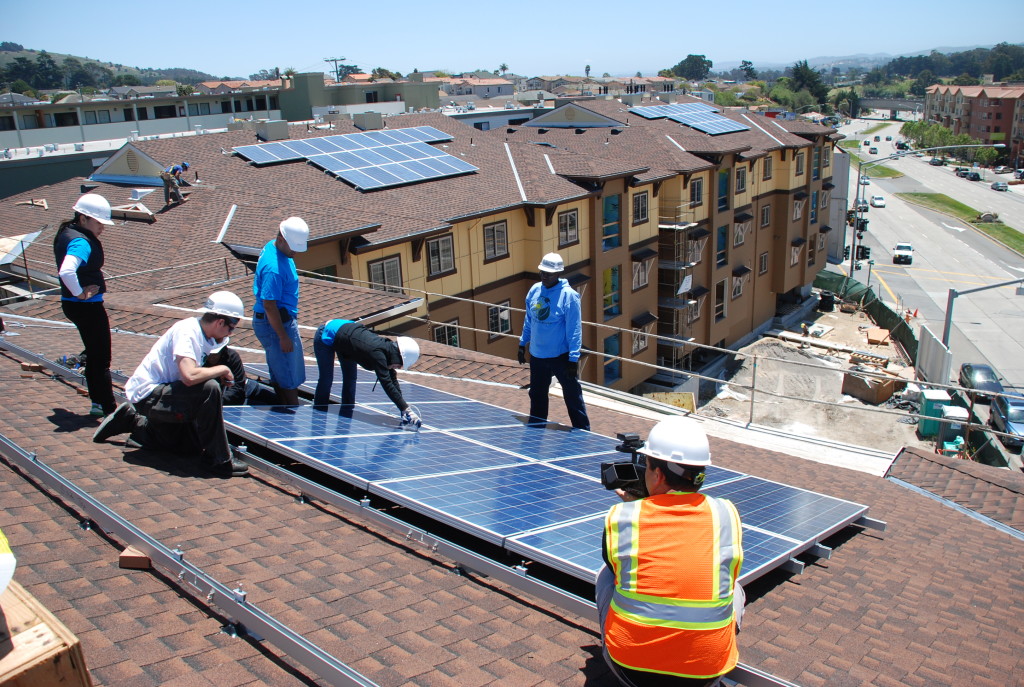
A multifamily solar electric system may be on the roof or ground mounted. The system may be designed to offset electricity use for common areas or to offset tenant electricity usage, and be hooked up via a master meter, individual meters, or supply bill credits via virtual net energy metering (VNEM). Depending upon the market, a community solar project may be the best fit. Regardless of how the system and delivery of benefits is structured, the savings can help the housing authority or building owner better maintain the building, provide new tenant services, and/or reduce individual tenants’ electricity bills.
Successful Strategies
Deploying solar for multifamily affordable housing can be complicated and requires thoughtful approaches to supportive policy making. Important considerations to address include access to capital, regulatory barriers, capacity of housing owners, energy efficiency integration and tenant benefit and engagement. Successful strategies include:
- Net metering or other incentives to ensure full value of solar
- Financial incentives to reduce upfront costs, overcome split incentives scenarios, and ensure benefits reach tenants
- Measures to reduce barriers to financing
- Technical assistance to affordable housing providers, participating contractors and service providers
- Pairing solar with energy efficiency programs
- Facilitating waivers from regulatory utility and rent allowance requirements to maximize tenant benefit. (Under a utility allowance formula, a resident’s rent plus utilities equate to a certain percentage of the resident’s income. When a resident’s utility bills decrease, as can happen with solar, the rent portion will automatically increase under the formula)
- Integrating job training and employment opportunities in the solar energy and energy efficiency sectors of the economy
California and Washington D.C. are the only examples of active programs in place specifically targeted to deploying solar for multifamily affordable housing, but other states have included incentives for multifamily solar adoption in their broader solar programs.
For example, the Massachusetts SREC II program has awarded a higher price for solar renewable energy credits that are generated by projects that are considered community shared solar projects or that serve affordable housing. When the SREC II program ends, it will be replaced by the new Solar Massachusetts Renewable Target (SMART) program. As proposed, SMART will award a higher incentive for solar projects that serve affordable housing. For more information, refer to the Massachusetts Community Solar section.
Resources
Many solar and housing advocates have recognized the enormous opportunity to bring solar to multifamily affordable housing. Interstate Renewable Energy Council’s Expanding Solar Access: Pathways for Multifamily Housing, developed in partnership with Center for Sustainable Energy, outlines two potential pathways to enable greater solar access for renters and multifamily residents and LMI communities. And as featured on the Federal Partnerships page, HUD’s Renew300 initiative provides technical assistance to educate affordable housing owners about the broad benefits and opportunities that solar energy provides.
Despite the critical importance of deploying solar on multifamily affordable housing, and the opportunity it presents to expand clean energy access and bring benefits to traditionally underserved customers, there is a lack of resources, tools, and information to help accomplish this goal. To fill this gap and overcome identified barriers to access, in the fall of 2019 Vote Solar, IREC, and GRID Alternatives sought to develop a deeper understanding of where the gaps lie. The organizations conducted a survey of affordable housing providers, energy program administrators, social services providers, policy makers, solar providers, and housing advocates working to deploy solar for multifamily affordable housing buildings and their residents. Read a report of the survey’s findings here.
